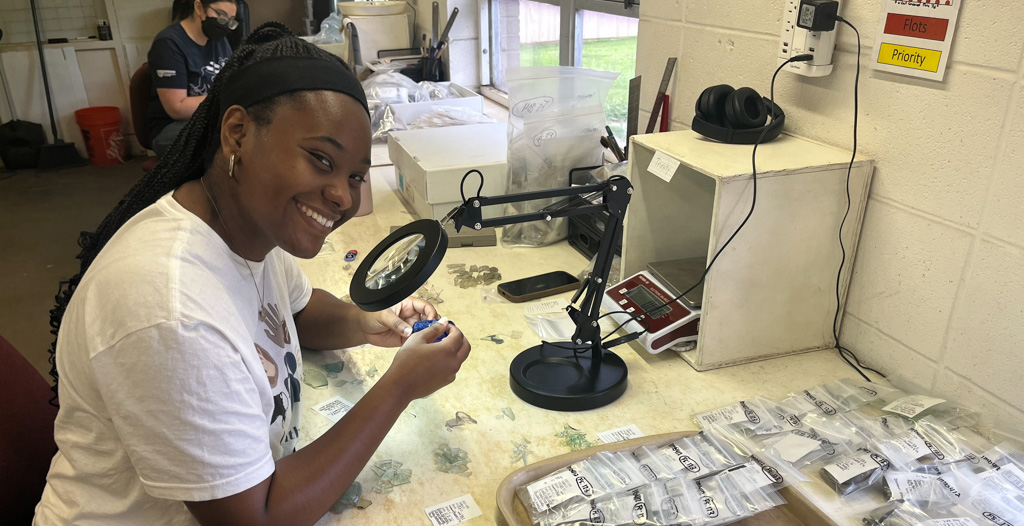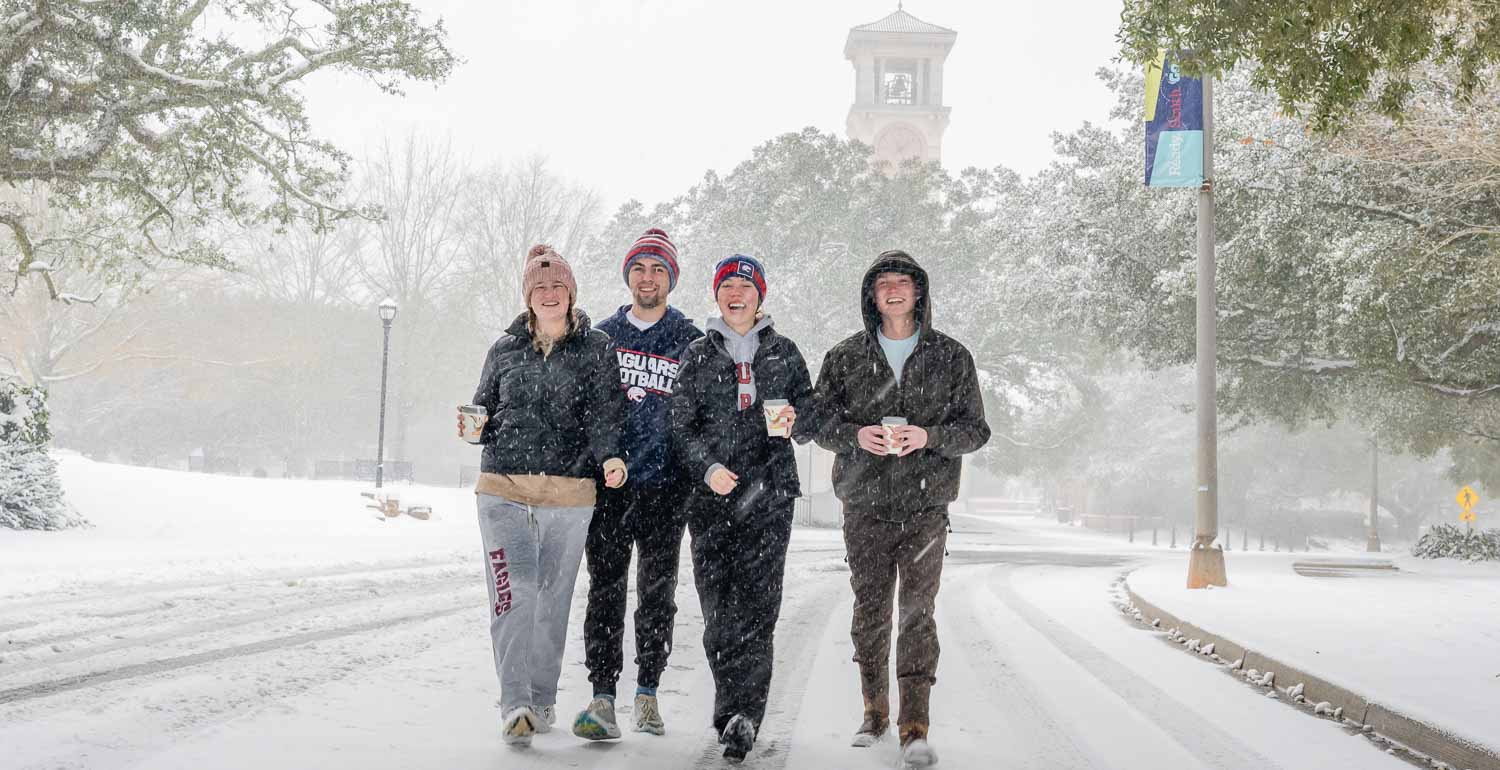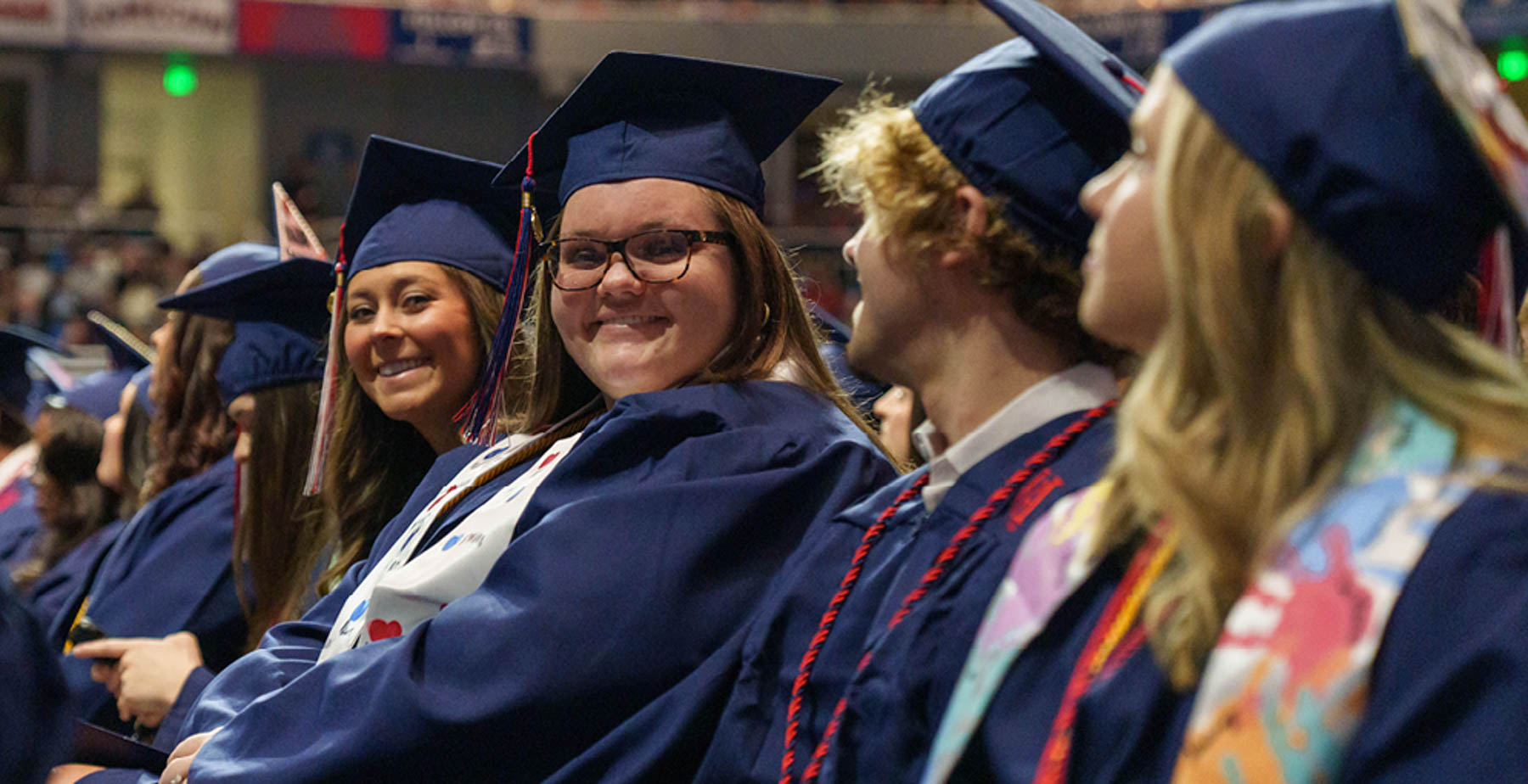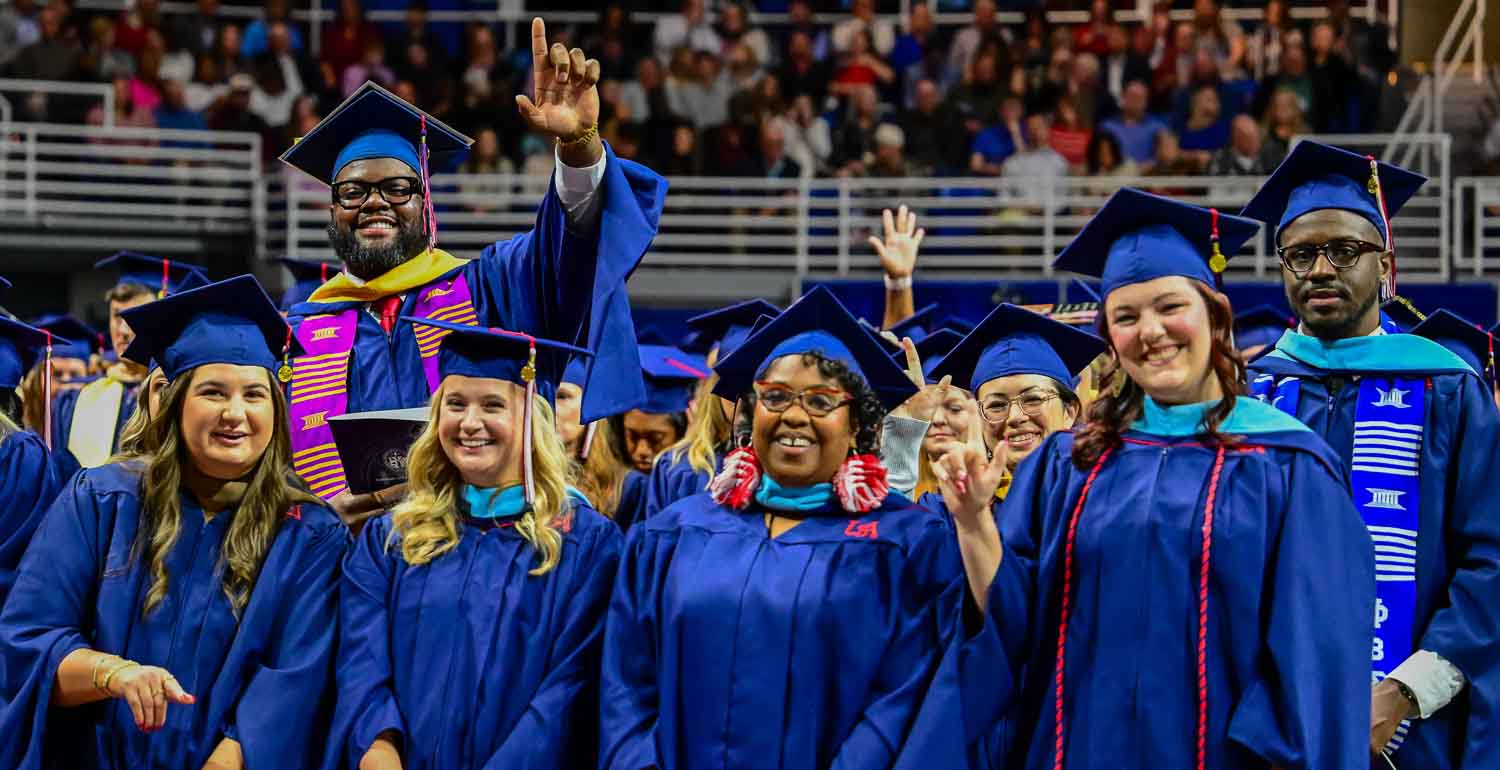Archaeology Open House Showcases the Dig
Posted on August 6, 2024

Archaeologist's refine and improve our understanding of the human past through excavation, finding and analyzing artifacts. Put another way, archaeologists investigate the human past to provide insights into how we arrived at our present, and allow us to look to the future.
Recently, the University of South Alabama Center for Archaeological Studies a unit of the Department of Sociology, Anthropology and Social Work held a summer open house to allow students, faculty and staff to visit the archaeology labs to see what happens after the artifacts have been collected in the field.
Tiny fragments of glass or ceramic objects are then washed, cleaned, sorted, recorded and sometimes put together again. This process provides evidence of past daily activities and the history of a site.
“Everyone knows how archaeologists collect artifacts during field excavation,” said USA Professor of Anthropology and Chief Calvin McGhee Professor of Native American Studies Dr. Philip Carr, director of the Center for Archaeological Studies. “We wanted to focus this open house on what happens when the artifacts are collected and brought back to our labs. Professor Emeritus Dr. Gregory Waselkov laid down a history of amazing fieldwork and built strong relationships with our partners that we continue to maintain to this day.”
At South’s Center for Archaeological Studies, students, faculty, staff and professional partners have found a multitude of artifacts during the I-10 Mobile River Bridge Archaeological Project, the largest of its kind in the area.
The archaeology and bioarchaeology labs are located on campus between the Archaeology Museum and the Chemistry Building.
Trinity Jenkins of Mobile is a senior majoring in anthropology with a minor in forensic science. She is currently gaining experience in the lab by checking and cataloging the artifacts that have been collected. Once the items are brought to the lab, it could take a year or more before the artifacts have been processed completely.
“This has been a great experience for me,” Jenkins said. “I am washing and scrubbing each of the artifacts that were found in the ground. I will then assign each to a functional group and provide a date when possible. My goal after graduation is to earn my doctorate in anthropology. I was inspired to study this field by watching the television program ‘Bones,’ which features a forensic anthropologist as the main character.”
During the open house, Associate Professor of Anthropology Dr. Erin Nelson answered questions about the teaching labs. She said lab work is an imperative part of archaeology.
“In this lab, we teach our students how to analyze skeletal remains and different artifacts,” Nelson explained. “Having the labs on campus is very beneficial and convenient. Today, this event allowed our USA family to see all the work that goes into getting the artifacts ready for further research. This is a passion of mine, and I enjoy teaching and supporting our students.”
Jeremy Pruitt and Alicia Palmer, both USA Anthropology alum, work as staff archaeologists in the Center for Archaeological Studies. Both were instrumental in educating visitors about each lab’s function during the open house. Representatives from Wiregrass, the archaeological consulting firm that partners with the University, were on site as well. Dr. Carr provided one last insight about archaeology, “It’s not what you find, but what you find out!”





